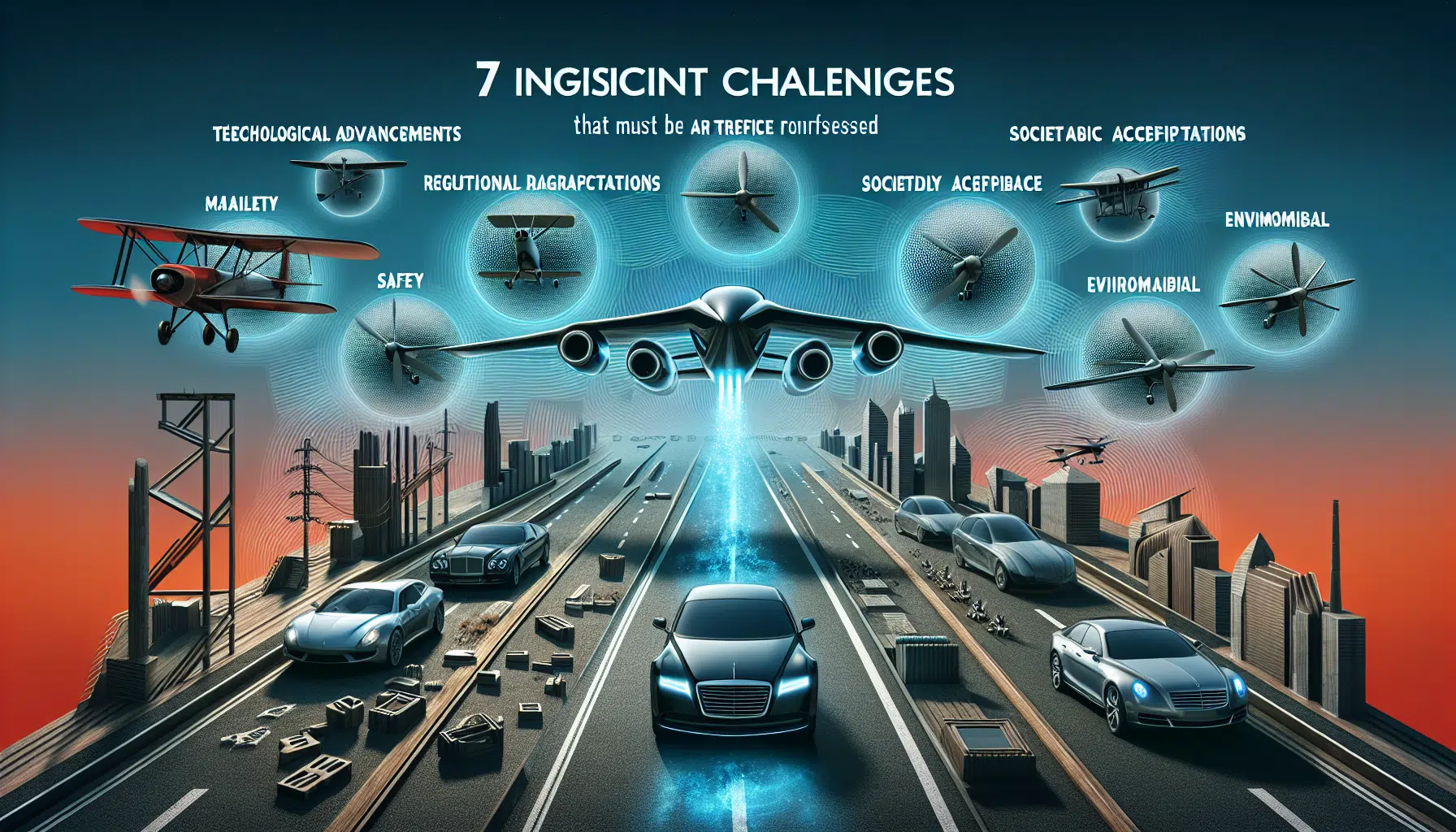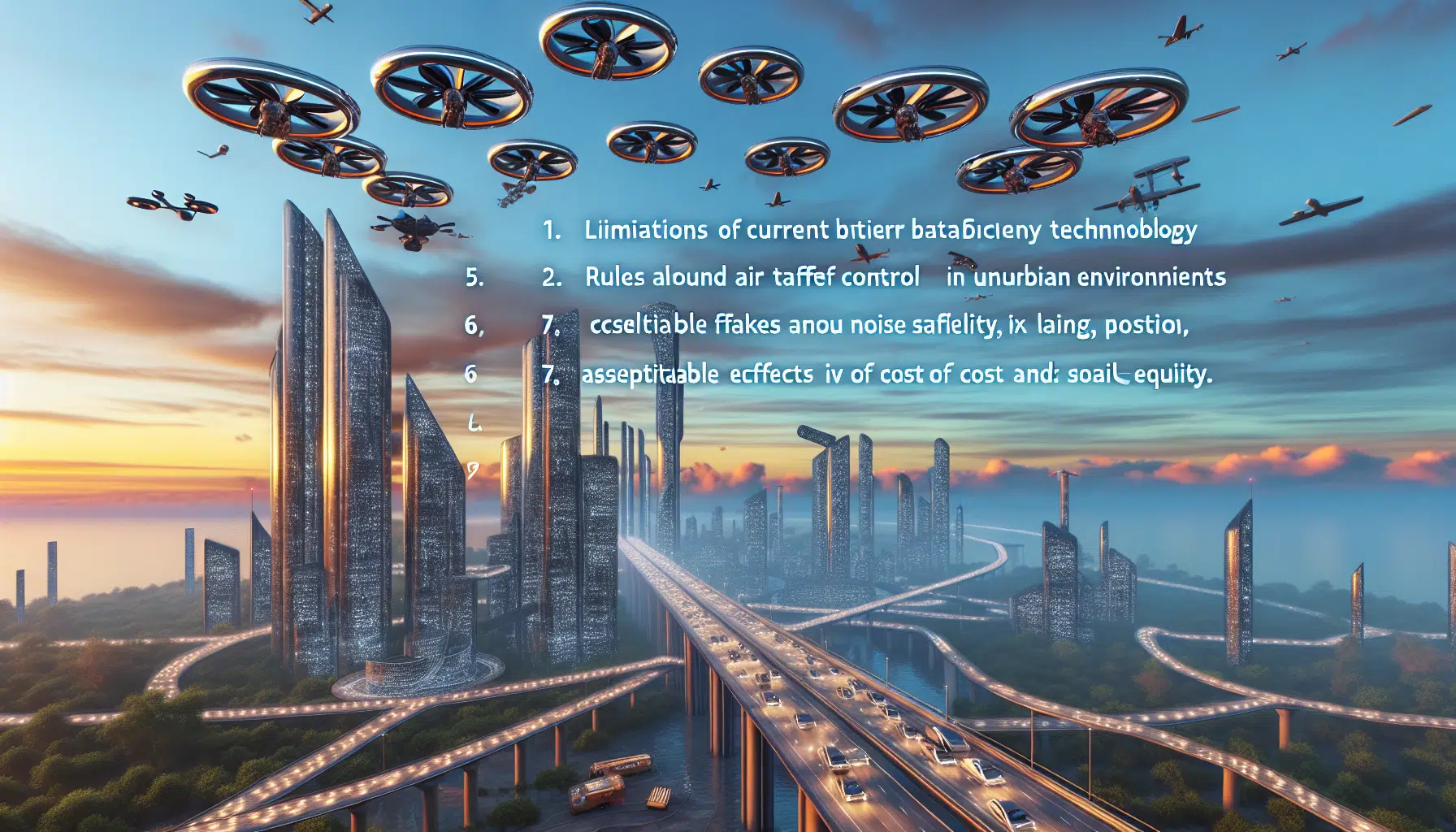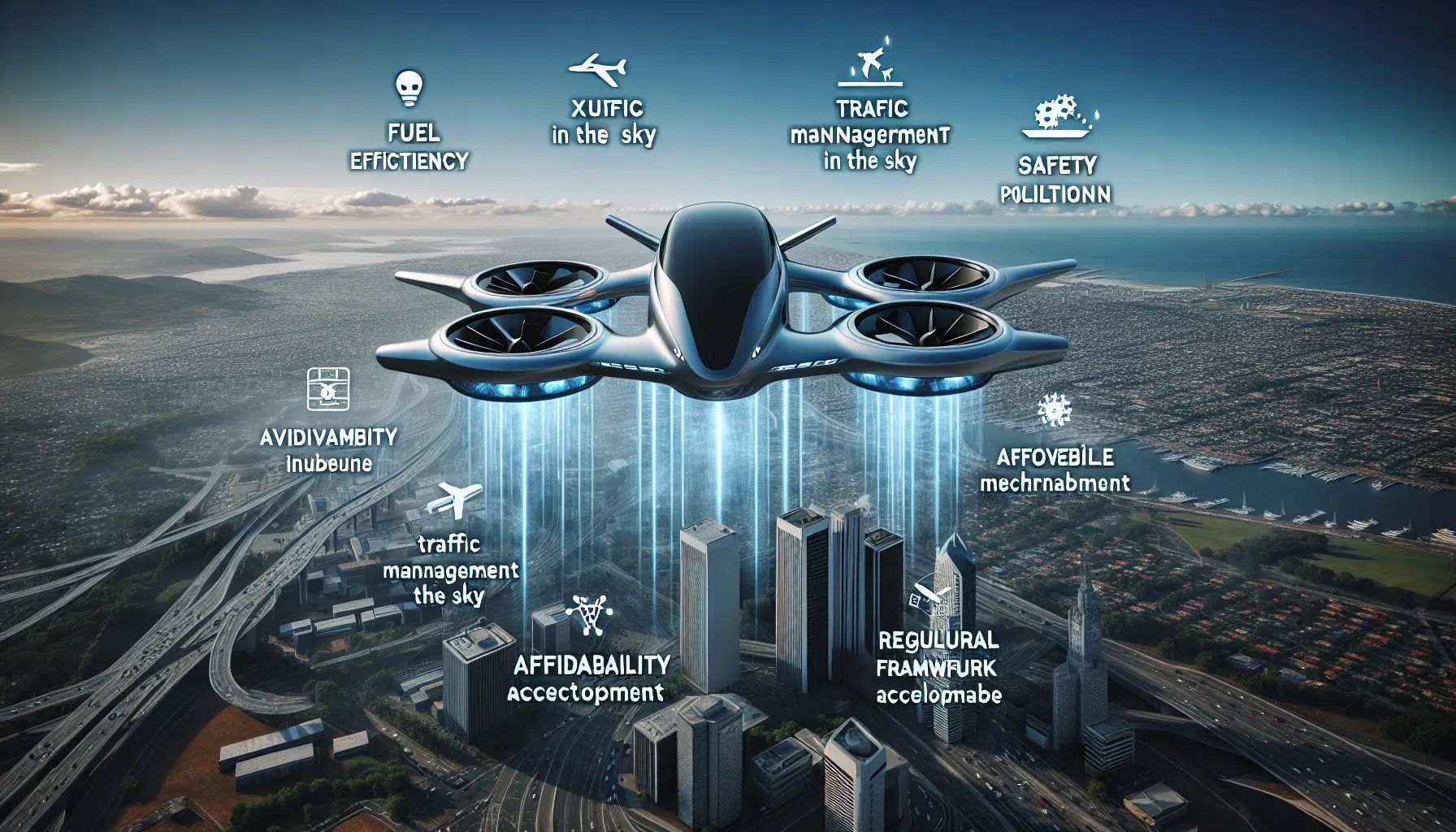7 problems to solve before having flying cars

“Imagine having your own flying car, an innovative way to travel and avoid traffic jams, something worthy of a science fiction movie. However, before this futuristic vision becomes a reality, there are 7 major problems that need to be solved. Discover what they are in this article.”
Safety and Regulatory Considerations for Flying Cars

The Future of Mobility: Flying Cars
In an era where technology advances at an extraordinary pace, the realm of vehicles is no exception. We find ourselves on the brink of a revolution in mobility with the advent of flying cars that promise to radically change our lives. But, like any technological innovation, it brings new challenges, mainly in terms of safety and regulations.
Safety and Flying Cars
Safety is one of the main concerns in the development of flying cars. It is not only about ensuring the safety of the pilot and passengers but also of those on the ground. In this sense, flying cars will need to incorporate sophisticated safety systems to prevent accidents in the air and during takeoff and landing. Among the proposed solutions are emergency parachutes and remote control systems in case of autopilot failure.
Another important consideration is the need for an air traffic system. Just like cars on the road, aerial vehicles will require solid rules to prevent collisions. This system will have to efficiently manage a large amount of air traffic, especially in urban areas.
Regulations
Regulations are another crucial aspect in the implementation of flying vehicles. Currently, most countries lack specific laws for flying cars, although there are regulations for drones, which can serve as a good starting point. According to an analysis published in [LegalToday](https://www.legaltoday.com/opinion/blogs/transversal/blog-comunicando-derecho-regulando-comunicacion/no-tenemos-coches-voladores-pero-si-drones-2023-07-12/), drones and flying cars share certain regulatory challenges, especially regarding safety and privacy.
Additionally, regulations must be established concerning the performance modifications of these vehicles, just as is currently done with terrestrial cars. Laws will need to adapt to address the specificities of flying car technology, as noted by the website [Tork News](https://tork.news/noticias/Tuning-y-modificaciones-de-rendimiento-en-autos-en-Mexico-20230623-0083.html).
A Step Towards the Future
In summary, flying cars represent a huge step towards the future, but they carry significant challenges in terms of safety and regulations. It is essential that laws develop in tandem with technology to ensure a safe and efficient environment for all. The most important thing is that we need to be prepared for this future, which no longer seems like a mere fantasy but rather an imminent reality.
Technological and Logistical Challenges of Aerial Mobility

The New Era of Flying Cars
Imagine a world where cars are not only terrestrial means of transport but also aerial ones. This concept, once considered science fiction, is beginning to take shape as technology advances. However, although flying cars are exciting, they pose a series of technological and logistical challenges in aerial mobility that must be overcome for them to become a reality.
Technological Challenges
Flying cars require advanced technology, especially in terms of propulsion, navigation, and control. While the development of electric vehicles and autonomous control has advanced in recent years, aerial vehicles need more sophisticated and efficient systems. For example, they must be capable of taking off and landing vertically in an urban space safely and accurately.
Additionally, as these vehicles will need to operate both in the air and on the ground, the diversity of operating conditions presents additional technological challenges. Therefore, they must not only be efficient and safe but also able to cope with all kinds of weather and traffic conditions. To achieve this, these vehicles will need to be equipped with high-performance sensor systems and software capable of making quick and precise decisions in changing situations.
Flying vehicles also pose challenges in terms of energy. Although these vehicles are expected to be electric to minimize their environmental impact, it is still unclear how the required energy efficiency will be achieved. According to a review by Lexlatin, more powerful and lighter batteries are needed to make electric energy viable in aerial mobility.
Logistical Challenges
Beyond the technological challenges, flying cars also present significant logistical challenges. For example, how will air traffic be managed if more and more vehicles take to the skies? This is a fundamental safety and efficiency issue that may require a radical rethink of current traffic rules and vehicle movement.
Additionally, flying cars will need support infrastructures, including takeoff and landing locations, as well as charging stations. In cities filled with buildings and limited spaces, it may be difficult to find or create the necessary space for these infrastructures.
Finally, the environmental impact of flying cars must be considered. Although they are expected to be electric, their massive deployment could have a significant impact on electricity demand and greenhouse gas emissions. As reported by Business Insider, the sustainability of flying cars is one of the biggest challenges that need to be addressed.
There is no doubt that flying cars are an exciting futuristic idea! But there is still much work to be done to solve the technological and logistical challenges they present. However, with the continuous commitment and innovation from engineers and scientists, perhaps we will see aerial highways become a reality in our near future.




